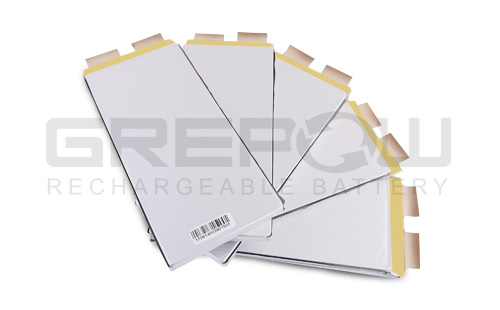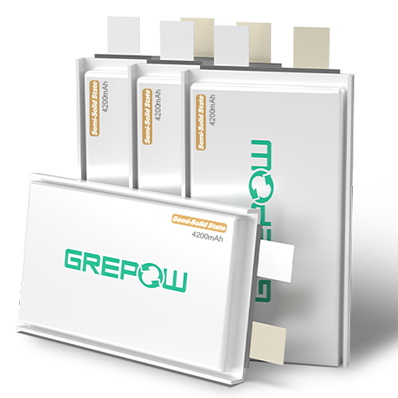Energy Density for Batteries FAQs
What is Energy Density for a Battery?
Energy density for a battery is a crucial metric that indicates the amount
of energy a battery can store relative to its weight or volume. It is a
fundamental measure used to compare the performance of different battery types
and chemistries. Energy density can be expressed in two main forms:
1. Gravimetric
energy density, which measures energy per unit mass (typically in watt-hours per
kilogram, Wh/kg),
2. Volumetric energy density, which measures energy per unit
volume (typically in watt-hours per liter, Wh/L).
These measures are vital for
understanding how efficient and effective a battery is in storing and delivering
energy.
Types of Batteries and Their Energy Densities
Lithium-ion Batteries: These have some of the highest energy densities for commercial batteries, typically ranging from 150 to 250 Wh/kg and 250 to 730 Wh/L, depending on the specific chemistry and design.
Nickel-metal Hydride (NiMH) Batteries: Generally have lower energy densities, around 60-120 Wh/kg and 140-300 Wh/L.
Lead-acid Batteries: These have even lower energy densities, around 30-50 Wh/kg and 60-110 Wh/L.
Note: The above figures get higher and higher with the times. Because battery technology is always moving forward, high energy density is now the direction of many battery R&D and production. In addition, the above energy density data is different between individual cells and battery packs.
What Does High Energy Density Mean?
High energy density in a battery means that it can store a large amount of
energy in a relatively small mass or volume. This characteristic is especially
important for applications where space and weight are limited. For instance, in
portable electronic devices like smartphones and laptops, as well as in electric
vehicles (EVs) and aerospace applications, high energy density batteries allow
for longer operation times and greater efficiency without adding significant
bulk or weight. Essentially, high energy density enables the design of more
compact, lightweight, and efficient energy storage solutions.
Advancements in Battery Technology
Advancements in battery technology continually aim to improve energy density, enhancing the performance and practicality of various battery-powered devices and vehicles. These improvements are essential for extending the operational range, reducing the weight, and increasing the efficiency of modern electronic devices and electric vehicles.
The Higher the Battery Energy Density, Will It Be the Better?
While higher energy density generally indicates a more efficient and compact energy storage solution, it is not always the singular factor determining the "better" battery. High energy density batteries often come with trade-offs, such as reduced cycle life, higher cost, lower discharge rate, or increased safety risks due to higher reactivity of the materials involved. Therefore, while high energy density is desirable for many applications, it must be balanced with other factors like durability, safety, cost, and the specific requirements of the application. For example, an electric vehicle might prioritize a balance of high energy density and long cycle life, while a portable electronic device might prioritize compact size and safety.
Why Choose a High Energy Density Battery?
Choosing a high energy density battery is often driven by the need for extended operational time, reduced weight, and minimized space. In electric vehicles, high energy density batteries allow for longer driving ranges and better performance without significantly increasing the vehicle's weight. For portable electronics, these batteries enable devices to be smaller and lighter while maintaining or even extending battery life. Additionally, high energy density batteries are essential in applications like drones and medical devices, where every gram counts and operational efficiency is paramount. The ability to store more energy in a smaller package opens up possibilities for innovation and improved functionality across various industries.
How to Calculate the Battery Energy Density?
Calculating the energy density of a battery involves determining the amount
of energy it can store and dividing that by its weight or volume.
1.For
gravimetric energy density, the formula is:
Gravimetric Energy Density = Wh / kg = Battery Energy / Weight = Ah × V / Kg
2.For volumetric energy density, the formula is:
Volumetric Energy Density = Wh / L = Battery Energy / Volume = Ah × V / L
Note that:Battery Energy (Wh) =Capacity (Ah)* Norminal Voltage (V)
For instance, if a battery has a capacity of 12000mAh and a nominal voltage of 22.2V:
Energy=12000/1000×22.2=266.4Wh (Ah=mAh/1000 ). If the weight of battery is 1700g, what's the battery energy density?
Gravimetric Energy Density=266.4/1.7=156.7Wh/kg (Kg=g/1000)
Among these factors: capacity refers to the discharge capacity of the battery,
voltage refers to the average voltage (for example, LFP norminal voltage is 3.2V), and mass refers to the mass of the battery cell or the battery
pack. Therefore, the energy density of a single battery cell is generally higher
than that of a battery pack.
For example: a lithium iron phosphate (LFP) battery produced by a certain manufacturer has a capacity of 280Ah, the mass of the battery cell is 6kg, and the platform voltage is 3.2V. Thus, the energy density of this battery is calculated as:
Energy Density = 280*3.2/6 = 149.3 Wh/kg
As an important parameter for measuring battery performance, energy density indicates that batteries with higher energy density can store more energy within the same weight or volume. This results in providing longer operating times or extended range for devices. Therefore, in practical applications, while ensuring other performance parameters, we aim for batteries with high energy density.
In all, to perform these calculations, you need to know the total capacity of the battery, typically provided in watt-hours (Wh), as well as its total weight in kilograms (kg) and volume in liters (L). By applying these formulas, one can quantitatively compare different batteries and assess their suitability for specific applications based on their energy storage efficiency.
Related Articles:
What Is a Semi-Solid State Battery?
What is a High Energy Density Battery?
Grepow High Energy Density Battery Solutions for Commercial Drone
High Energy Density vs. High Power Density Battery: What’s the Difference?
Related Articles
-

Resistance and Conductivity in Electric Batteries: A Simplified Explanation
2022-12-28 -

What is the Operating Voltage of a Battery?
2022-12-16 -

Will solid-state batteries be the next market outlet?
2021-05-13
Related products
-

Tattu 6S 9000mAh 22.2V 25C Lipo Drone Battery
-

Tattu G-Tech 6S 23000mAh 22.8V 25C HV Lipo Drone Battery
-

37000mAh Semi-Solid State High Energy Density Battery
-

4200mAh Semi-Solid State High Energy Density Battery
















































